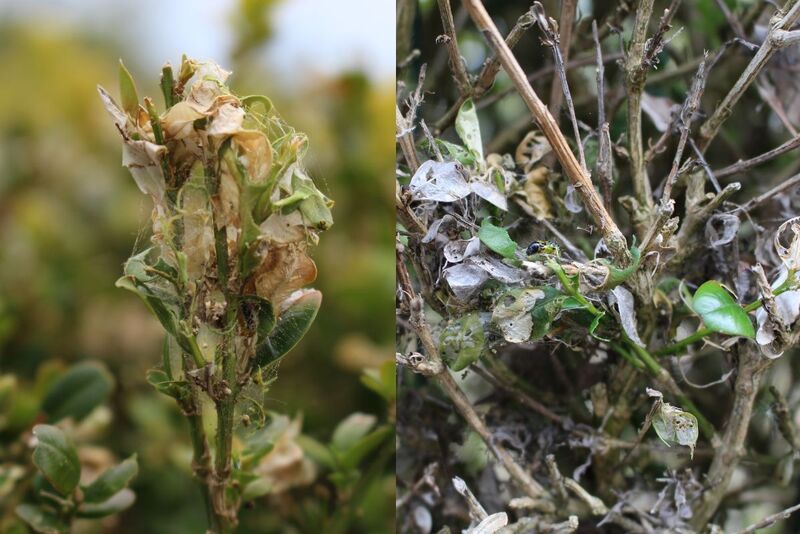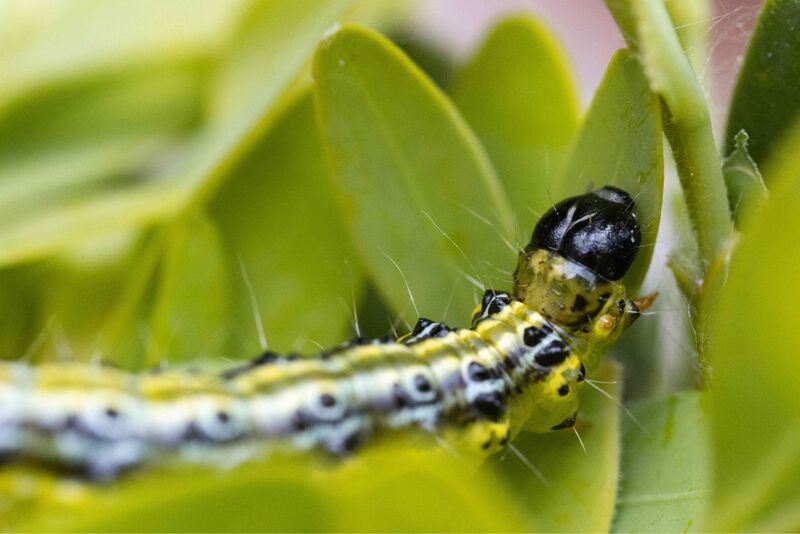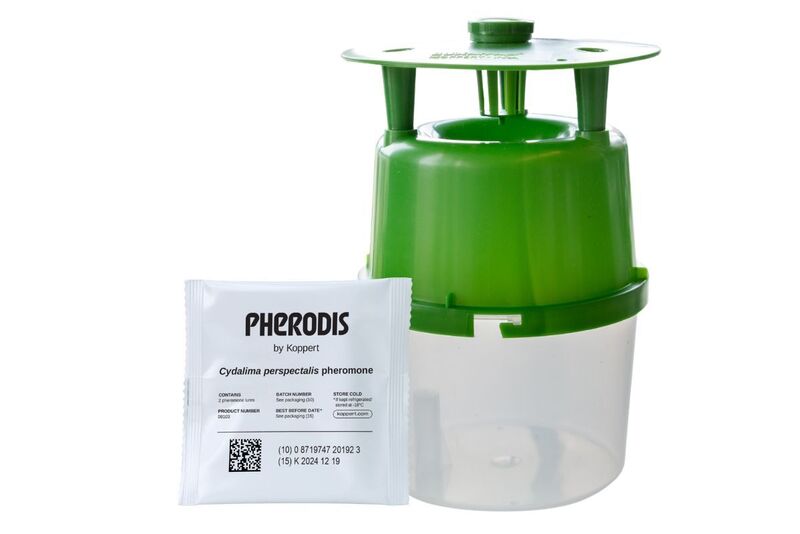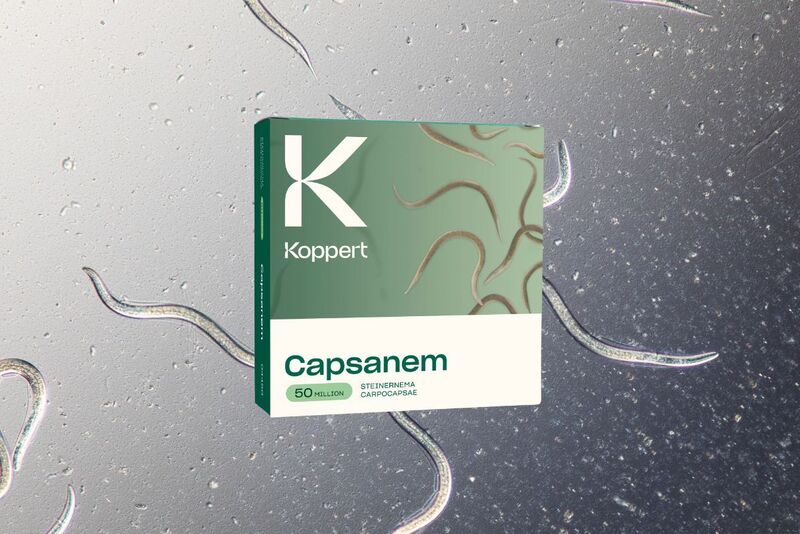The Box Tree Moth (Cydalima perspectalis) is an oligophagous species (eating only specific kinds of food). Sadly, this food is the leaves of Box Wood (Buxus spp.) species. An evergreen shrub Canadians commonly use in their gardens.
The Box Tree Moth causes severe defoliation which can lead to the death of the tree. Since it was first detected, it has caused severe damage in Europe. In the past few years, it has left a trail of destruction through forests, parks, tree nurseries and gardens in France, Germany, the Netherlands, Switzerland, Austria, and the United Kingdom.
Now, it has been detected in Canada. It has mainly established in Ontario, between Toronto and Windsor. However, in the summer of 2023 this moth was additionally confirmed in Quebec, Nova Scotia, New Brunswick, and Newfoundland and Labrador.

Box tree caterpillars can develop in large numbers and in severe cases kill box wood plants. The caterpillars will defoliate plants and leave skeleton like leaves with webbing that can cover the entire tree. They can even bore into the bark of more mature box plants. Box tree caterpillars are green with distinctive black stripes and white dots.

Koppert Has The Answer In Two Easy Steps:
Step One: Early Detection Buxatrap and Pherodis Cydalima perspectalis
It is important to detect the early signs of an attack in spring. The first step is to use box tree moth traps (Buxatrap) containing the specific sex pheromone Pherodis Cydalima perspectalis, to lure the male moth. Females are not attracted.
Apply the Buxatrap on a stick at a height of 1.5 meters. Only 1 trap is needed every 30-180m2 (300-2000sq.ft).
The pheromones are to be replaced every 8 weeks, during the moths flying season. This tends to be between May and November, depending on where you are located.
Here is a YouTube link on: How to use Buxatrap from Koppert.

Step Two: Biological Control of Caterpillars with Capsanem
Laboratory studies, field studies, and practical application have shown that Koppert’s entomopathogenic nematode product, Capsanem, (containing Steinernema carpocapsae) can effectively kill young box tree moth larvae (that is why early detection of the pest is crucial).
It is recommended that the nematodes are applied when there is a high humidity level around the leaves. So, evening sprays and good application techniques of these predatory nematodes are recommended. This aids the nematodes to keep alive long enough to search for their pray and effectively kill them.
